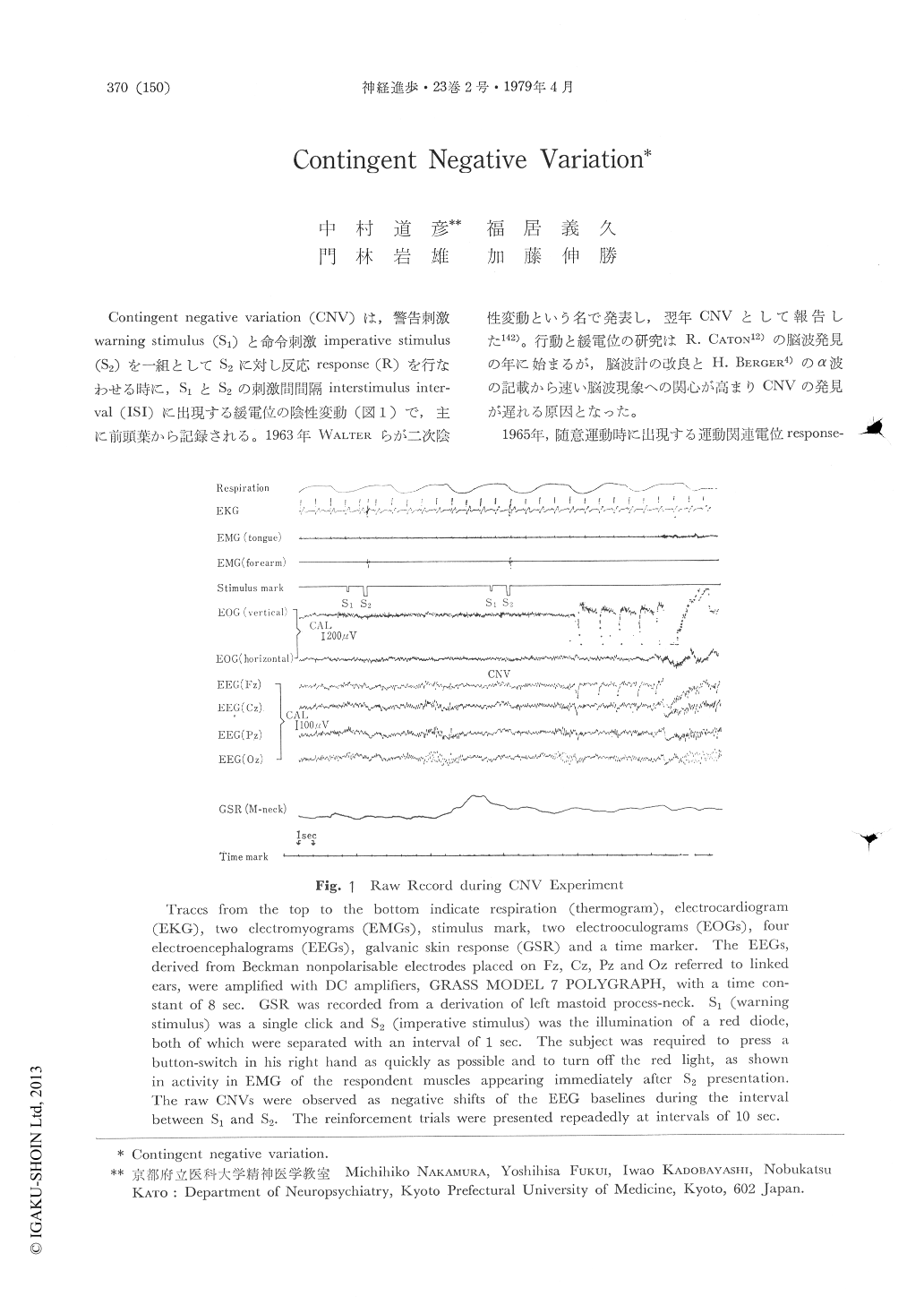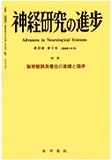Japanese
English
- 有料閲覧
- Abstract 文献概要
- 1ページ目 Look Inside
Contingent negative variation(CNV)は,警告刺激warning stimulus(S1)と命令刺激imperative stimulus(S2)を一組としてS2に対し反応response(R)を行なわせる時に,S1とS2の刺激間間隔interstimulus interval(ISI)に出現する緩電位の陰性変動(図1)で,主に前頭葉から記録される。1963年WALTERらが二次陰性変動という名で発表し,翌年CNVとして報告した142)。行動と緩電位の研究はR.CATON12)の脳波発見の年に始まるが,脳波計の改良とH.BERGER4)のα波の記載から速い脳波現象への関心が高まりCNVの発見が遅れる原因となった。
1965年,随意運動時に出現する運動関連電位rcsponse-related potential(RRP)—準備電位64)や運動電位135)—が報告され,さらにCNVなどを含め事象関連電位event-related potentialと呼ばれる。RRPは別に述べられるので,ここではCNVの記録上の問題,健康者の特徴,臨床応用,心理学的・生理学的解釈,CNVの二重過程仮説を述べる。
We describe some problems in recording techniques of the CNV and its findings obtained from healthy subjects and patients with various psychiatric and neurological disorders, and finally we propose a "dual process" hypothesis for the CNV.
The CNV can be observed in 2-year-old children and increases in its central-dominant magnitude as the children grow to puberty, though their CNVs are very sensitive to social influences.

Copyright © 1979, Igaku-Shoin Ltd. All rights reserved.


